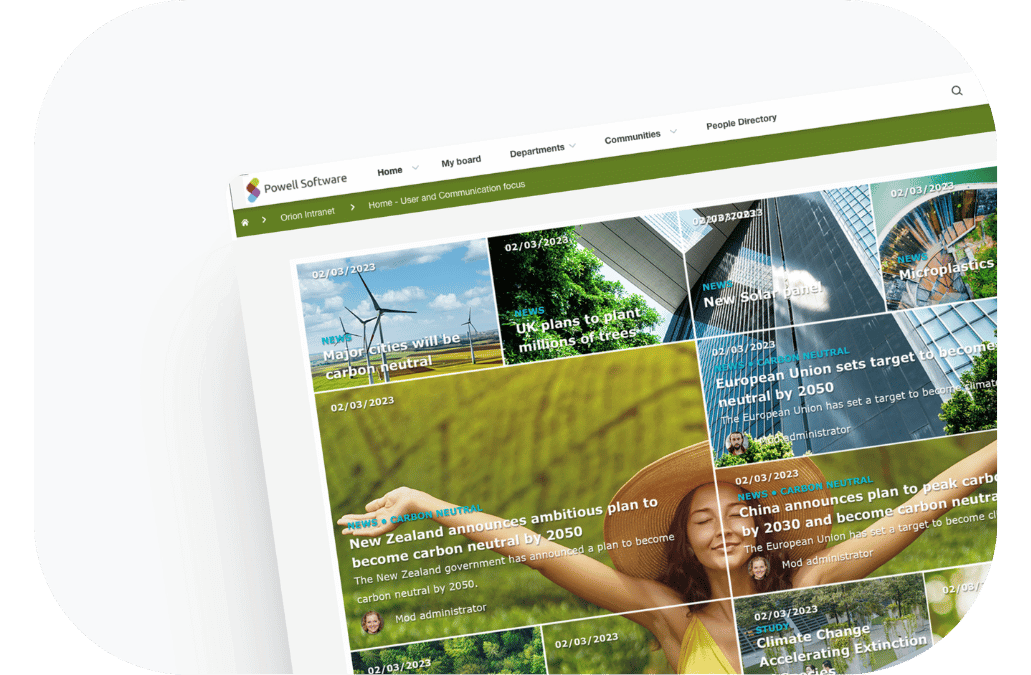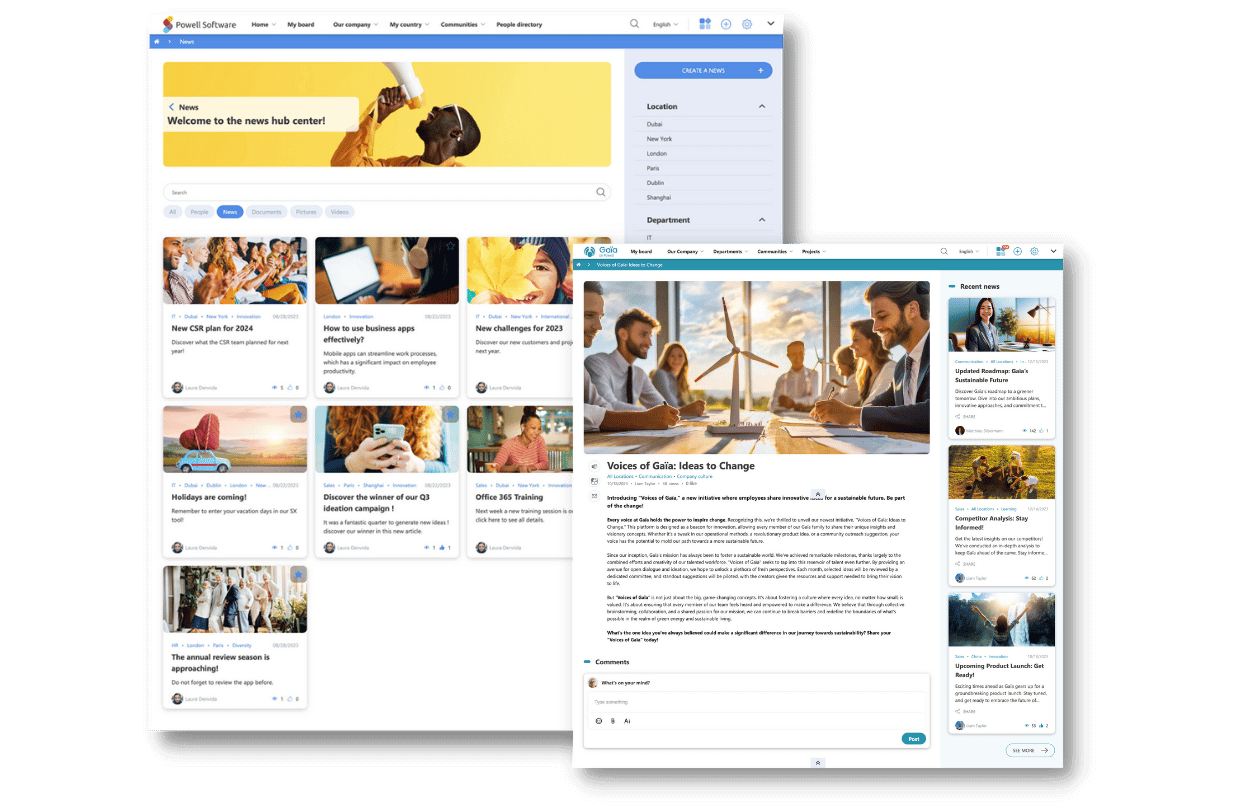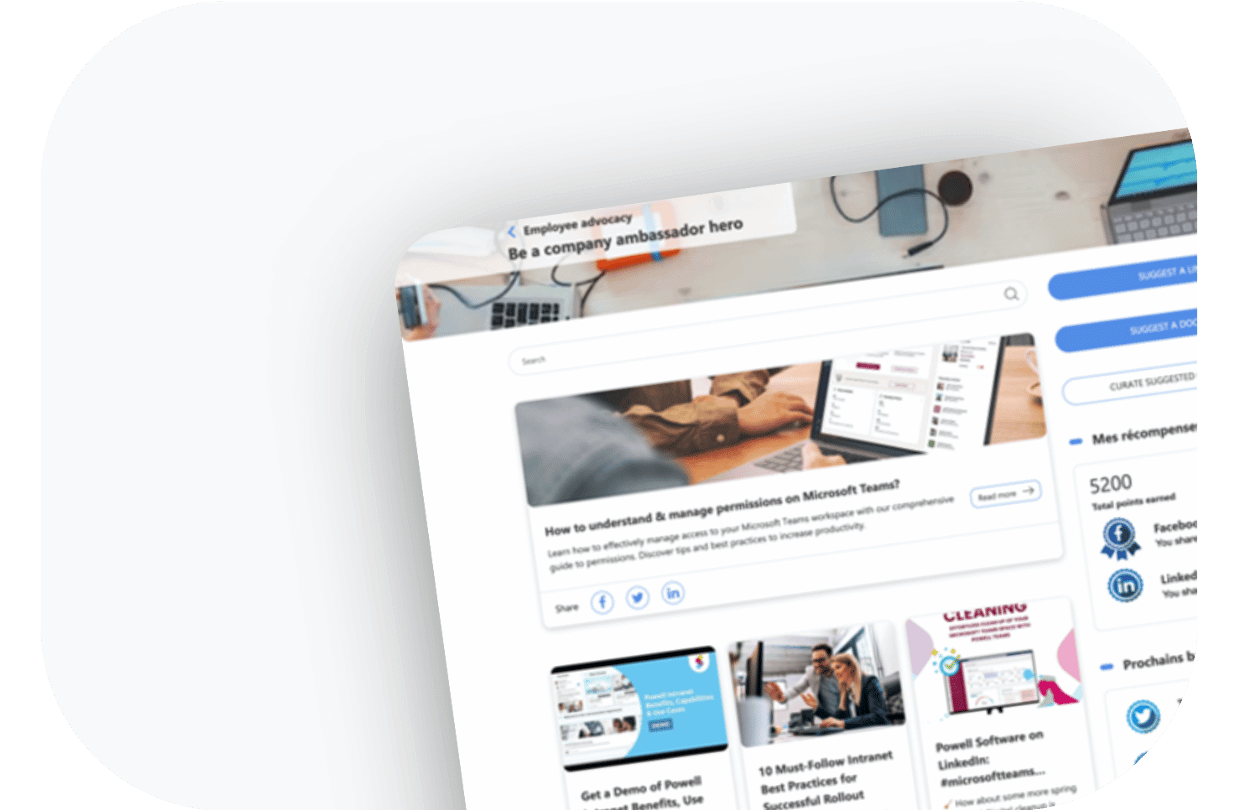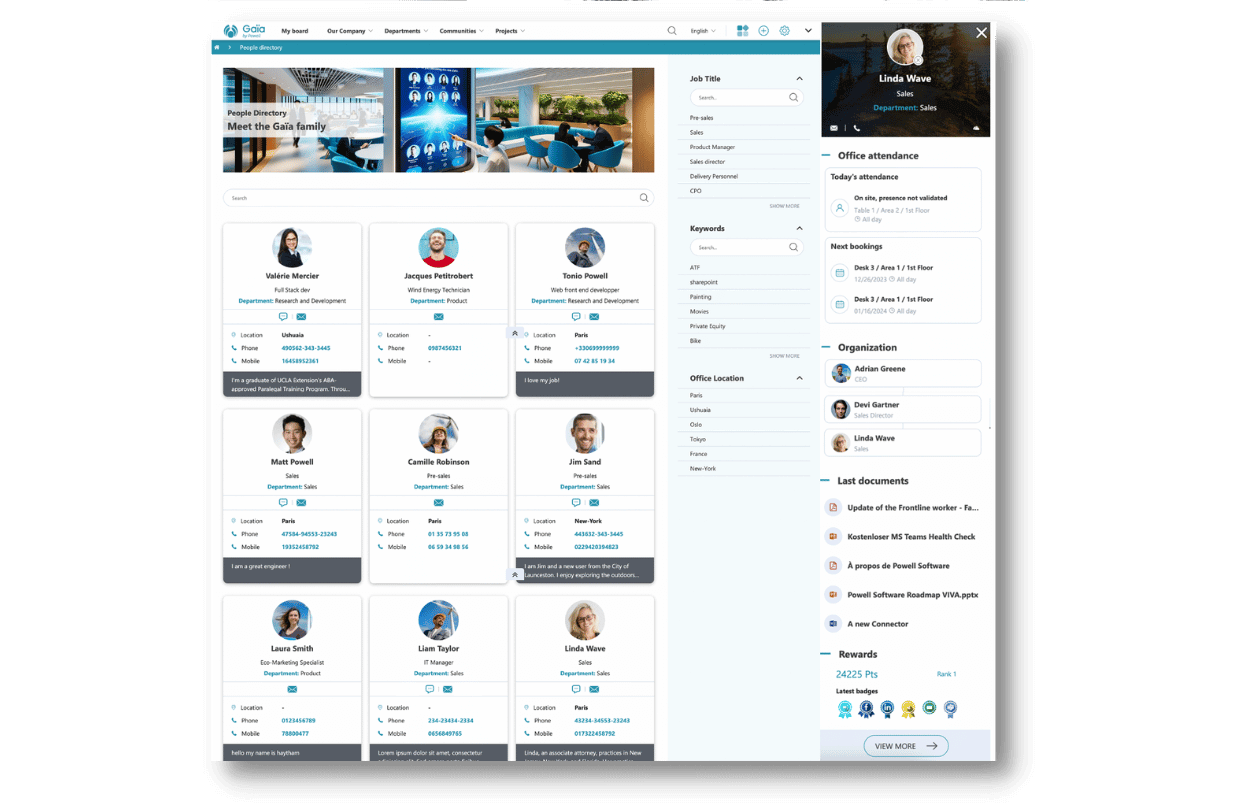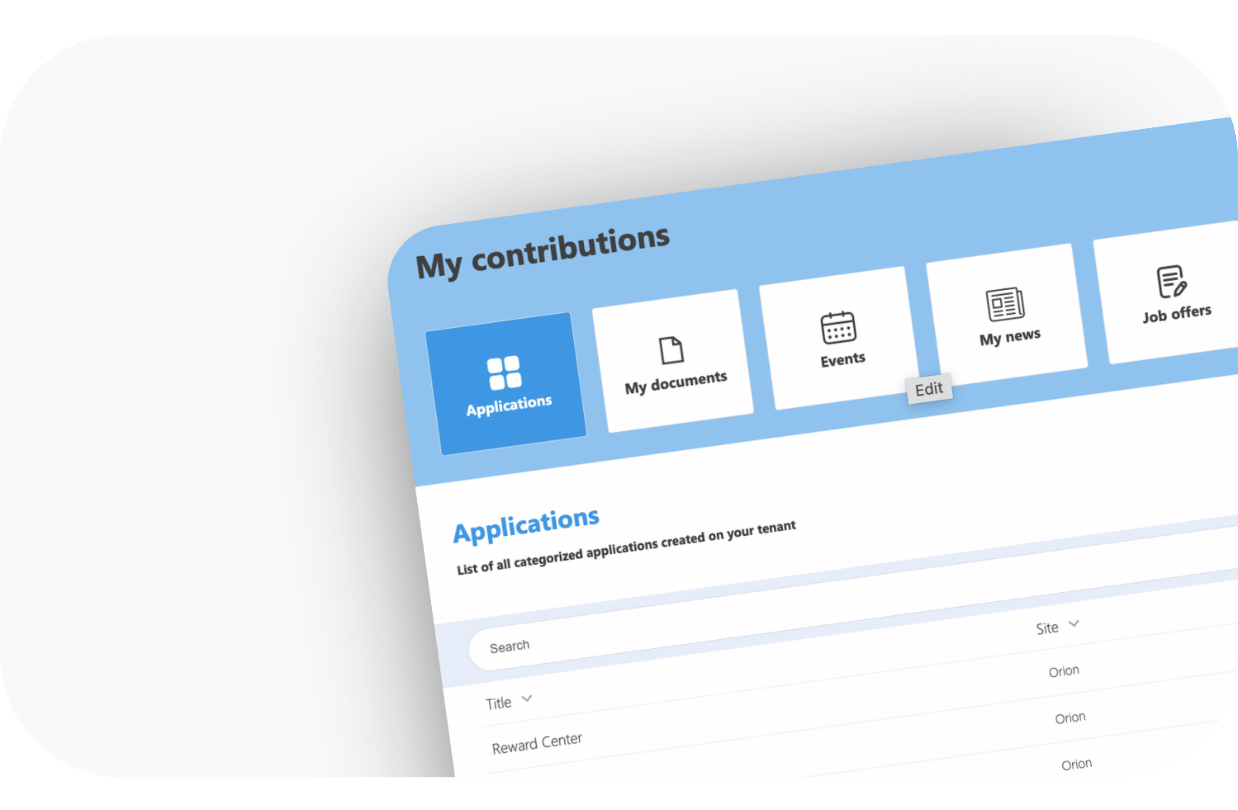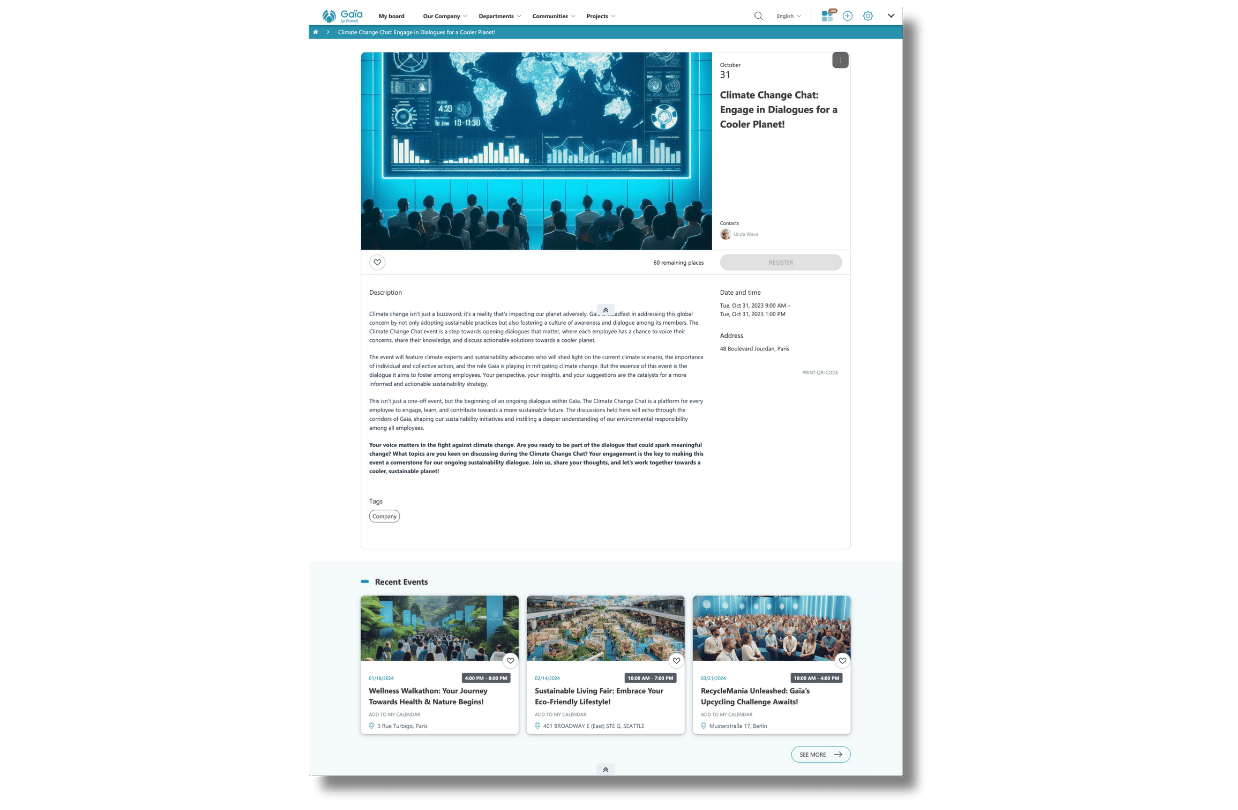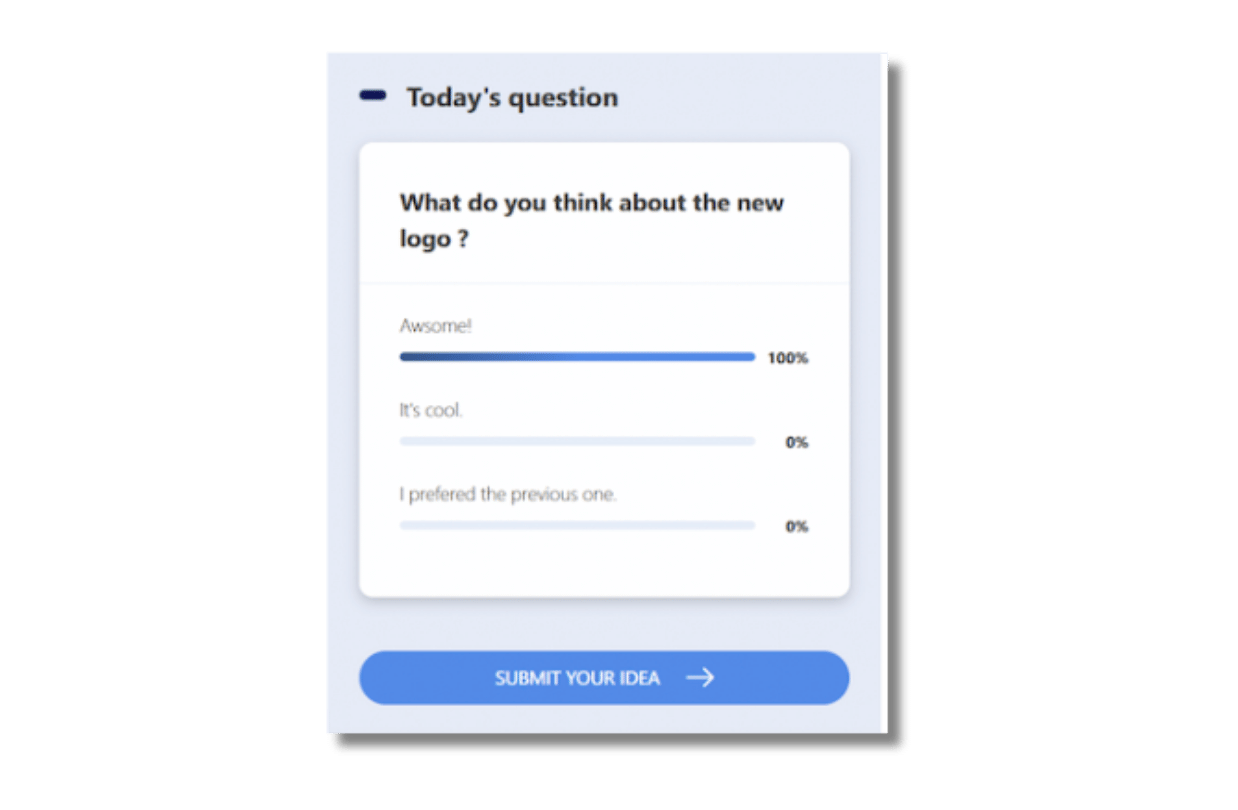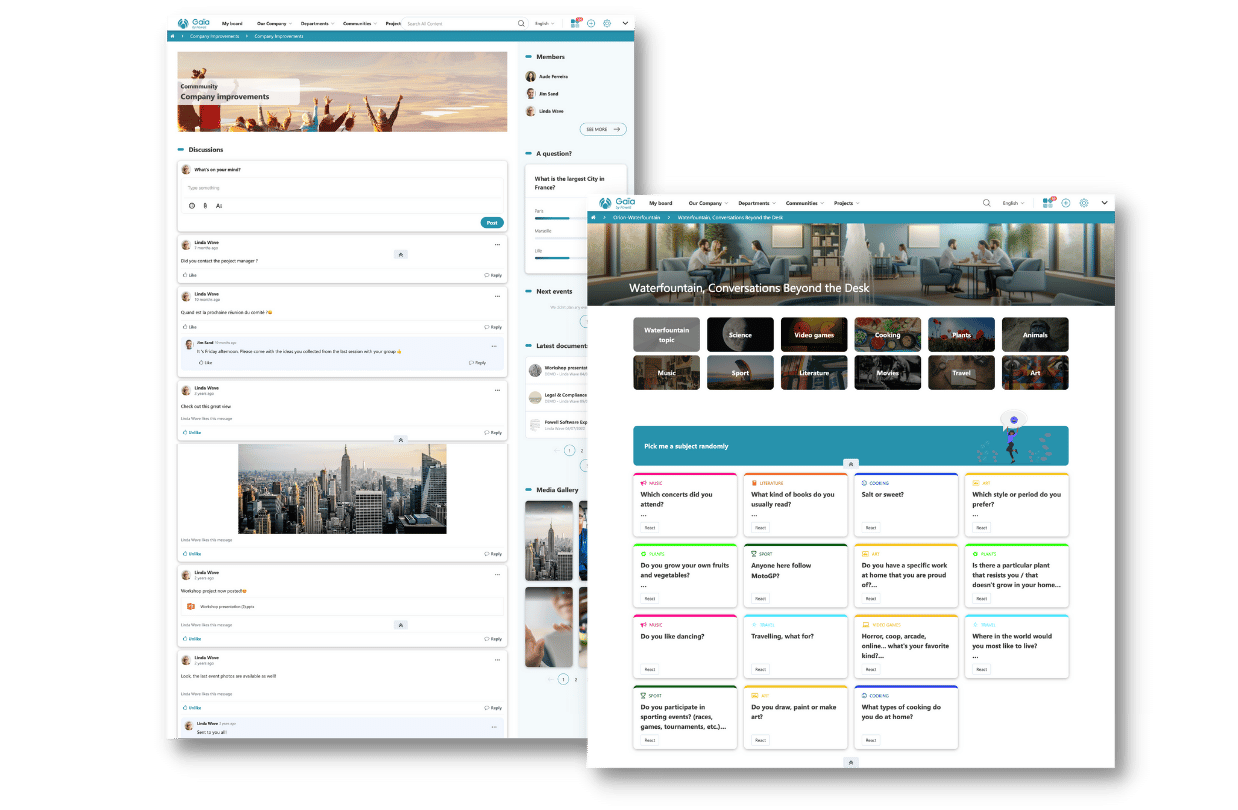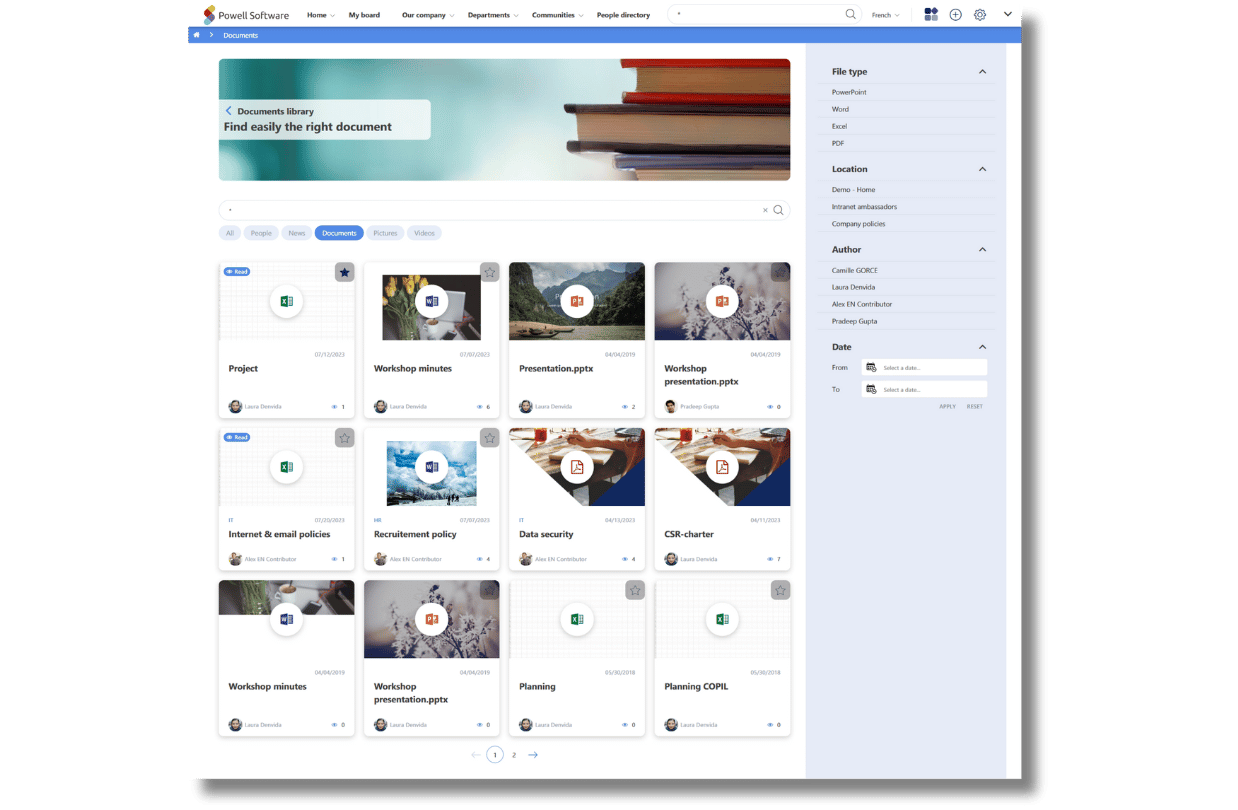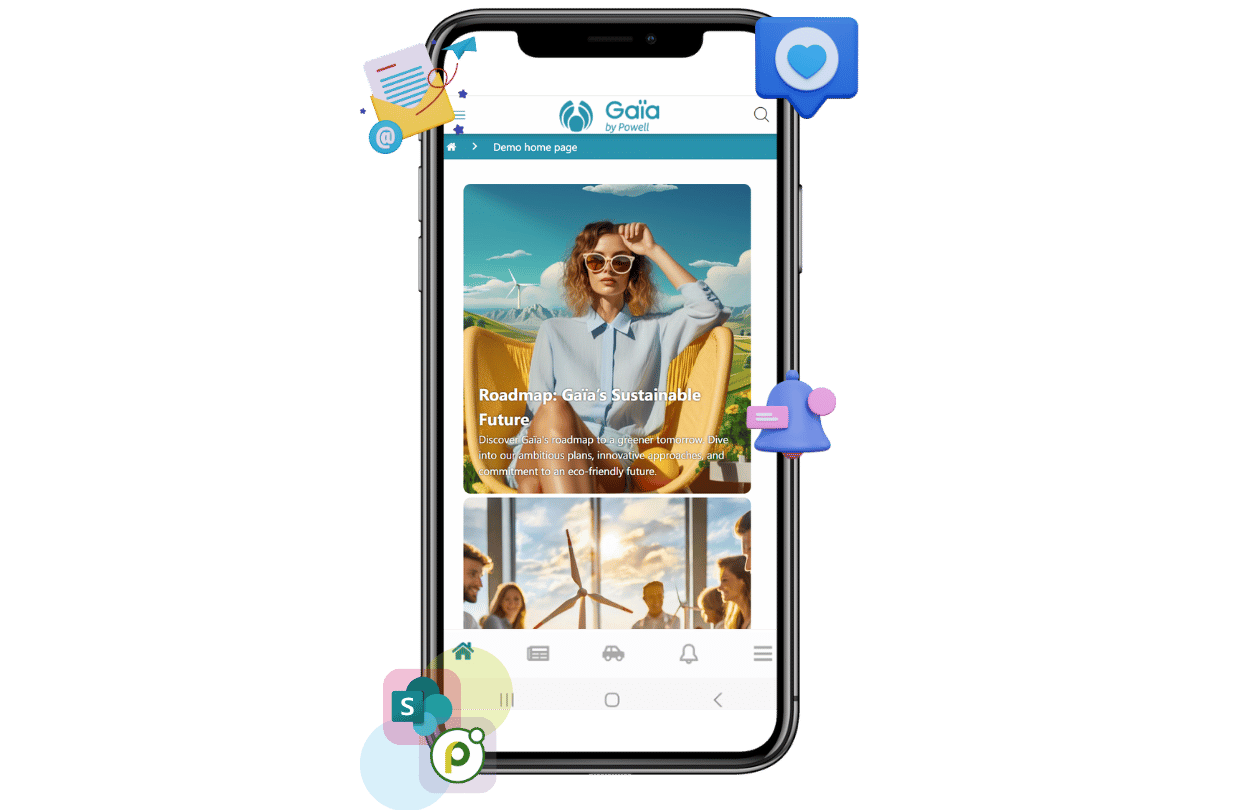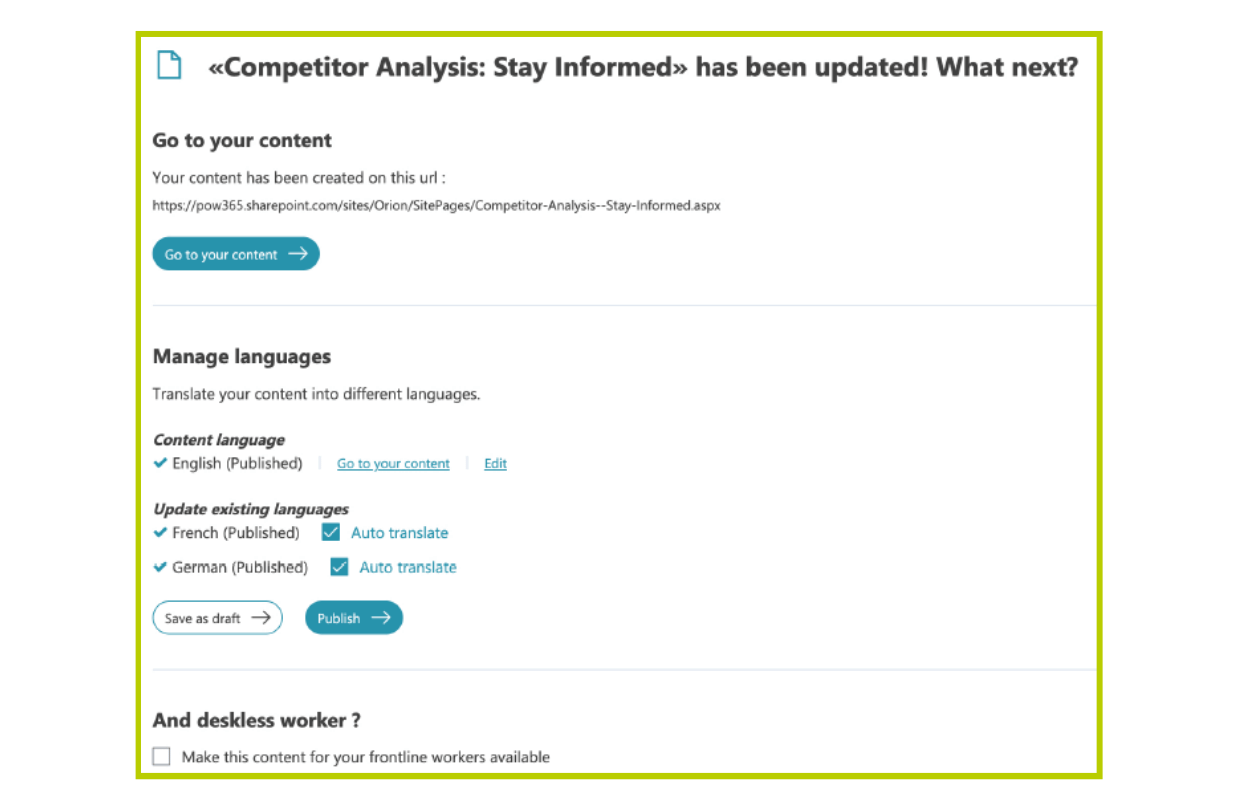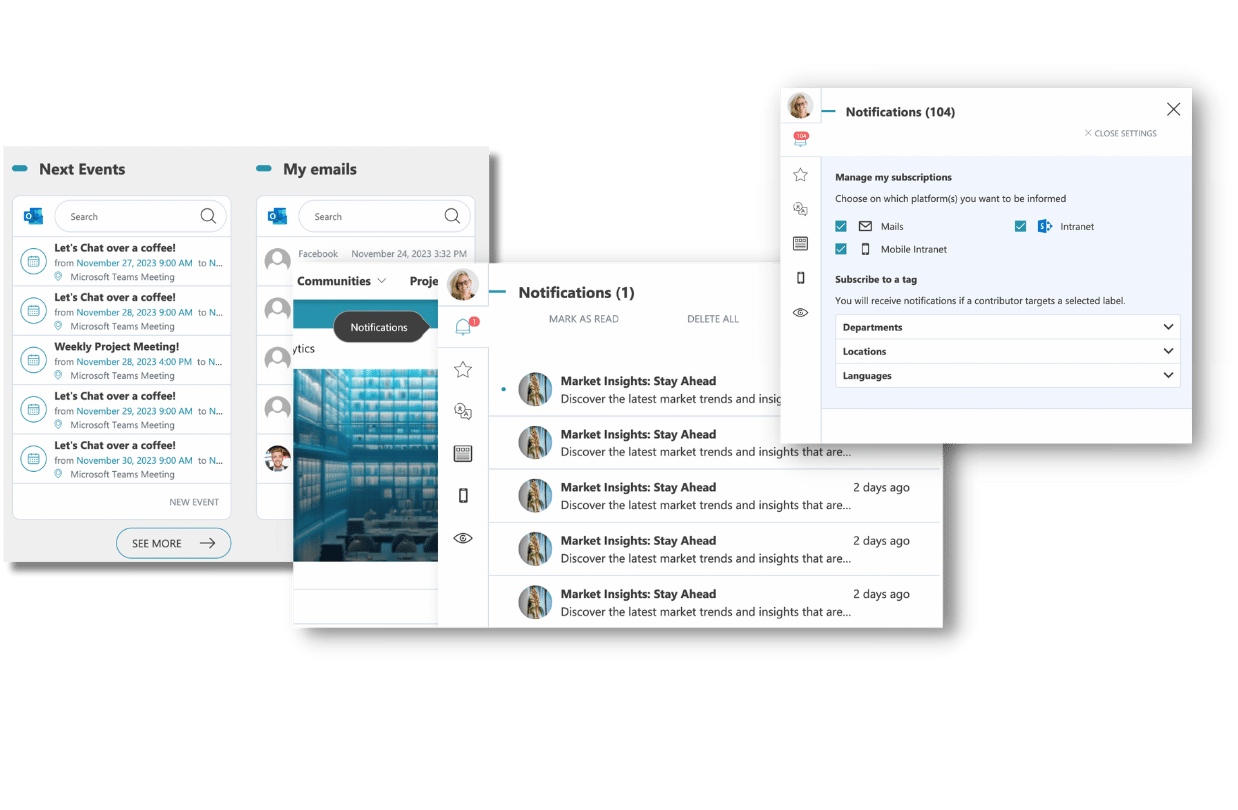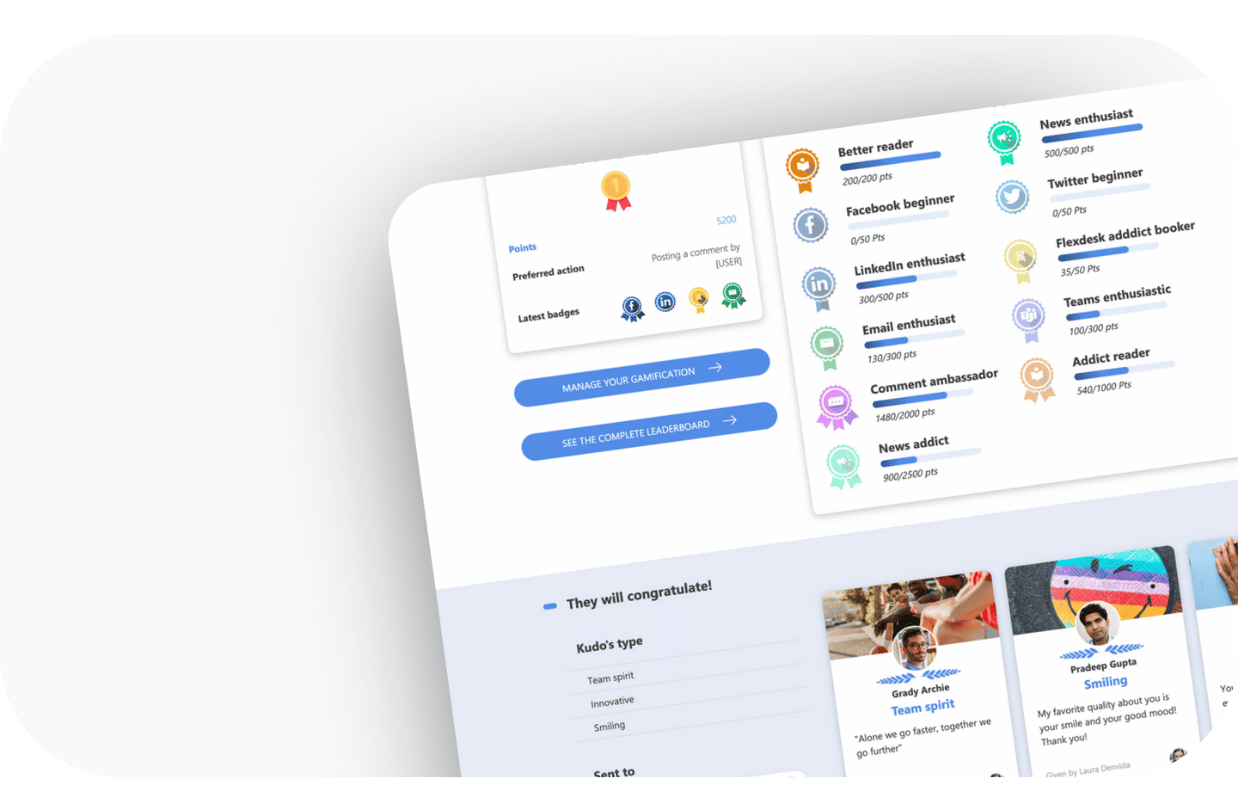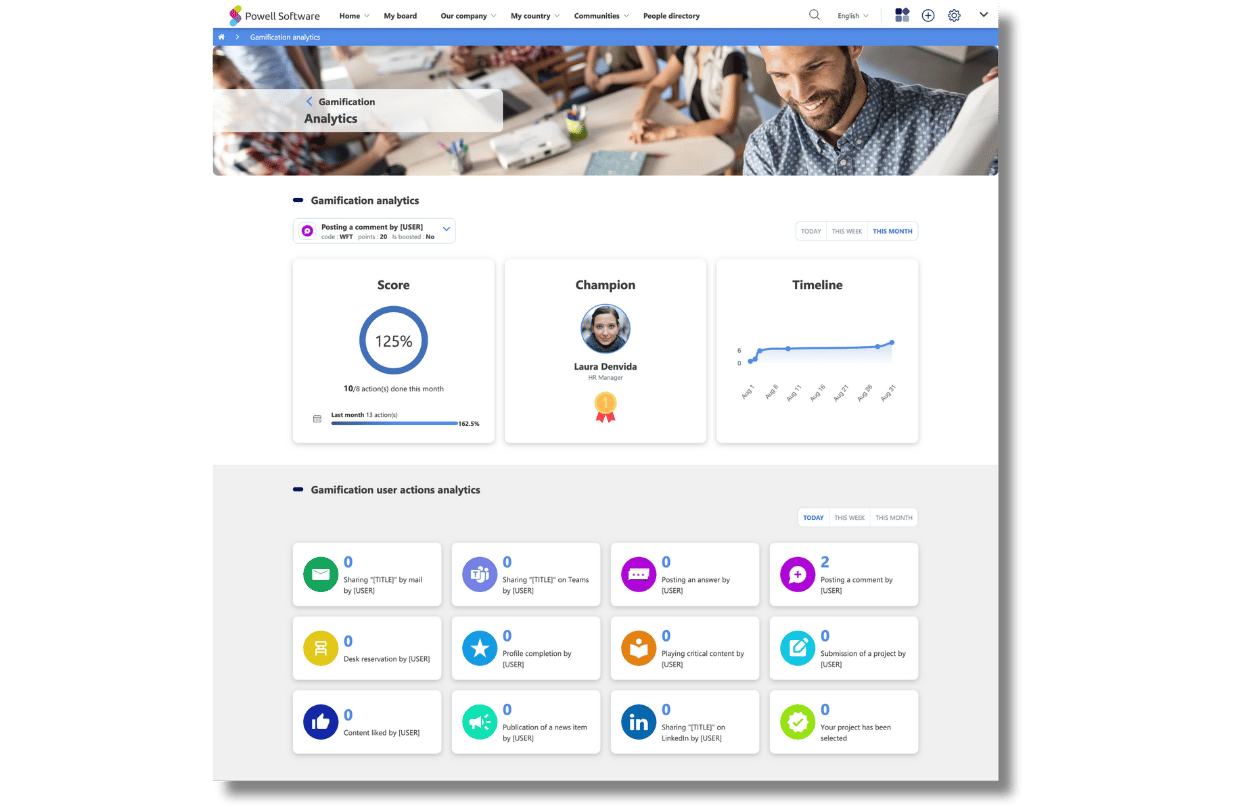Why is an intranet essential for internal communication?
Effective internal communication is more critical than ever. With teams often dispersed across various locations and time zones, fostering a sense of unity and shared purpose becomes a formidable challenge. An internal communications (comms) intranet serves as a centralized hub, bridging gaps and ensuring that every employee stays informed, engaged, and aligned with the organization’s goals. Beyond just a repository of information, a well-designed intranet cultivates a vibrant community, promotes transparency, and drives collaboration. As we delve into the 14 non-negotiable features of an internal comms intranet, we’ll explore how each element contributes to building a cohesive and productive workplace culture.. There are endless intranet benefits.
What makes a great intranet for internal communication teams?
A great intranet for internal comms teams goes beyond basic document storage—it’s a dynamic platform that engages employees, streamlines workflows, and aligns with organizational goals. Key attributes include:
- User-Centric Design: Intuitive navigation, personalized dashboards, and mobile accessibility ensure high adoption rates.
- Integrated Tools: Seamless connections to email, calendars, and collaboration apps (e.g., Teams, Slack) reduce tool fragmentation.
- Content Management: Easy-to-update templates, multimedia support, and approval workflows empower comms teams to publish quickly.
- Analytics & Feedback: Built-in metrics (e.g., read rates, engagement heatmaps) and pulse surveys help measure impact and refine strategies.
During vendor selection, request an intranet demo to test these features firsthand. Look for platforms that strike a balance between flexibility and scalability, especially if your organization is growing. For larger deployments, an RFP (Request for Proposal) ensures that vendors address specific requirements, such as security, multilingual support, or AI-powered search.
How can an internal comms intranet improve team collaboration?
A great intranet is like a trusted friend – always there to support and inspire. It’s where information flows freely, ideas flourish, and employees feel empowered. The best intranets make work more enjoyable and fulfilling.
Overcoming communication challenges with an intranet
Intranets are the answer to many communication challenges. They bridge the gap between remote and in-office teams, creating a sense of belonging. By centralizing information and making it easily accessible, intranet software reduces confusion and frustration.
How do you implement an internal comms intranet in your organization?
The best intranets are simple to use and navigate. They should make it easy for everyone to share ideas and opinions. Of course, security is critical. You’ll want a secure intranet that keeps your company’s information safe.
In short, investing in a state-of-the-art intranet can create a more connected, engaged, and productive workplace.
Non-negotiable internal comms intranet features
An intranet is a powerful tool for connecting employees and sharing information. While this article highlights essential intranet requirements for internal communication managers, a comprehensive intranet offers a wide range of functionalities. Here’s a full list of intranet features for every department.
Let’s delve into the core features that internal communication managers should prioritize:
1. Create a welcoming hub
A successful intranet is more than just a platform; it’s a digital community hub. Designing a visually appealing, easy-to-navigate space that reflects your company’s culture creates a welcoming environment where employees feel united and engaged. Incorporating personalized elements, such as customizable dashboards and user profiles, can further enhance the sense of belonging. Regularly updating the homepage with fresh content and interactive features also keeps the intranet dynamic and encourages frequent visits.
2. Deliver news that matters
Keep your team informed and inspired with a centralized news platform. Share company updates, success stories, and employee spotlights in a format that is easy to consume and share. Create high-quality intranet content that inspires. Empower employees to personalize their news feed to focus on what interests them most.
Implementing targeted news sections for different departments also ensures relevance and prevents information overload. Integrating multimedia elements, such as videos and podcasts, can make news delivery more engaging and accessible.
3. Amplify your message
Provide easy-to-use tools for sharing company news on social media, transforming employees into brand advocates. This will boost brand visibility and strengthen employee engagement and pride.
Additionally, offering pre-approved content templates simplifies the sharing process and ensures consistent messaging. Recognizing and rewarding employees who actively promote company content can further motivate participation.
4. Connect your team
Provide a comprehensive employee directory to build a connected workforce. Include clear contact information, photos, and organizational details to facilitate collaboration and networking.
Moreover, incorporating search filters based on skills, projects, or interests can help employees find the right colleagues to collaborate with. Allowing employees to update their profiles promotes accuracy and encourages ownership of their professional presence.
5. Foster open dialogue
Inspire open communication and idea sharing. Encourage employees to contribute articles, blog posts, and discussions. Fostering a culture of collaboration drives innovation and problem-solving.
Additionally, creating dedicated forums or discussion boards for specific topics can facilitate focused conversations and knowledge exchange. Implementing feedback mechanisms, such as upvoting or commenting, can highlight popular ideas and foster a sense of community.
6. Stay organized and informed
Keep everyone in sync with a centralized events calendar. Streamline event planning and ensure maximum attendance by providing clear details, RSVP options, and integration with other tools.
Also, syncing the intranet calendar with personal calendars helps employees manage their schedules more effectively. Including post-event summaries or recordings ensures that those who couldn’t attend stay informed.
7. Empower your employees
Give employees a voice by incorporating feedback mechanisms. Polls, surveys, and suggestion boxes provide valuable insights and demonstrate a commitment to employee engagement.
Additionally, regularly sharing the outcomes of feedback initiatives shows employees that their opinions are valued and acted upon. Anonymous feedback options can encourage more honest and constructive input.
8. Build a strong community
Foster a sense of belonging with dedicated spaces for social interaction. Encourage informal communication and relationship building through virtual water cooler chats and interest groups.
Moreover, highlighting employee achievements and milestones can boost morale and strengthen community bonds, and organizing virtual events or challenges can enhance engagement and camaraderie among remote teams.
9. Make information accessible
Create a centralized knowledge base where employees can easily find the necessary information. Implement a robust search function and clear categorization to streamline information retrieval.
Also, regularly auditing and updating content ensures that information remains current and reliable. Incorporating user-generated content can enrich the knowledge base with diverse perspectives and experiences.
10. Reach your employees everywhere
Extend your intranet’s reach with a mobile-optimized platform. A mobile intranet enables employees to access information, collaborate, and stay connected on the go.
Additionally, ensuring offline access to critical documents can support employees in areas with limited connectivity. Push notifications for important updates keep employees informed in real-time, regardless of their location.
11. Bridge language barriers
Create an inclusive workplace by offering language translation and localization options. Break down communication barriers and foster collaboration among global teams.
Additionally, providing content in multiple languages ensures that all employees can engage fully with the intranet.
12. Streamline your workflow
Integrate your intranet with essential business tools to create a seamless user experience. Connecting your intranet with email, calendars, and other applications improves efficiency and productivity.
13. Celebrate success together
Encourage and reward employees for their contributions. A robust employee recognition program fosters a positive and supportive work culture.
14. Powerful analytics
Unleash your intranet’s full potential with powerful analytics. Discover how employees interact with your intranet to make data-driven decisions that enhance user experience, improve content, and drive better results.
A great internal comms intranet is more than just a tool; it’s a hub for connection and productivity. An intranet can transform your workplace by offering easy-to-use features like news updates, collaboration spaces, and mobile access. It helps people feel connected, informed, and engaged. Your whole company benefits when employees have the necessary information and can work together seamlessly.
Elevate Internal Communication, Empower Every Employee
In a world where employee connection defines organizational success, your intranet isn’t just a tool — it’s the heartbeat of your internal culture. When thoughtfully designed with the right features, it becomes a trusted companion for every team member, simplifying communication, amplifying voices, and building a thriving digital community.
From welcoming hubs and personalized news to multilingual support and mobile accessibility, each feature contributes to a more connected, informed, and engaged workforce. It’s about making sure that no one is left out — whether they’re in the office, working remotely, or on the go.
By investing in a communications intranet that champions accessibility, transparency, and human connection, you’re not just ticking boxes — you’re shaping a workplace where collaboration flows, ideas spark, and people feel seen and heard. So, let your intranet do what it was meant to do: unite your people, support your purpose, and drive impact — one message, one connection, one team at a time.


